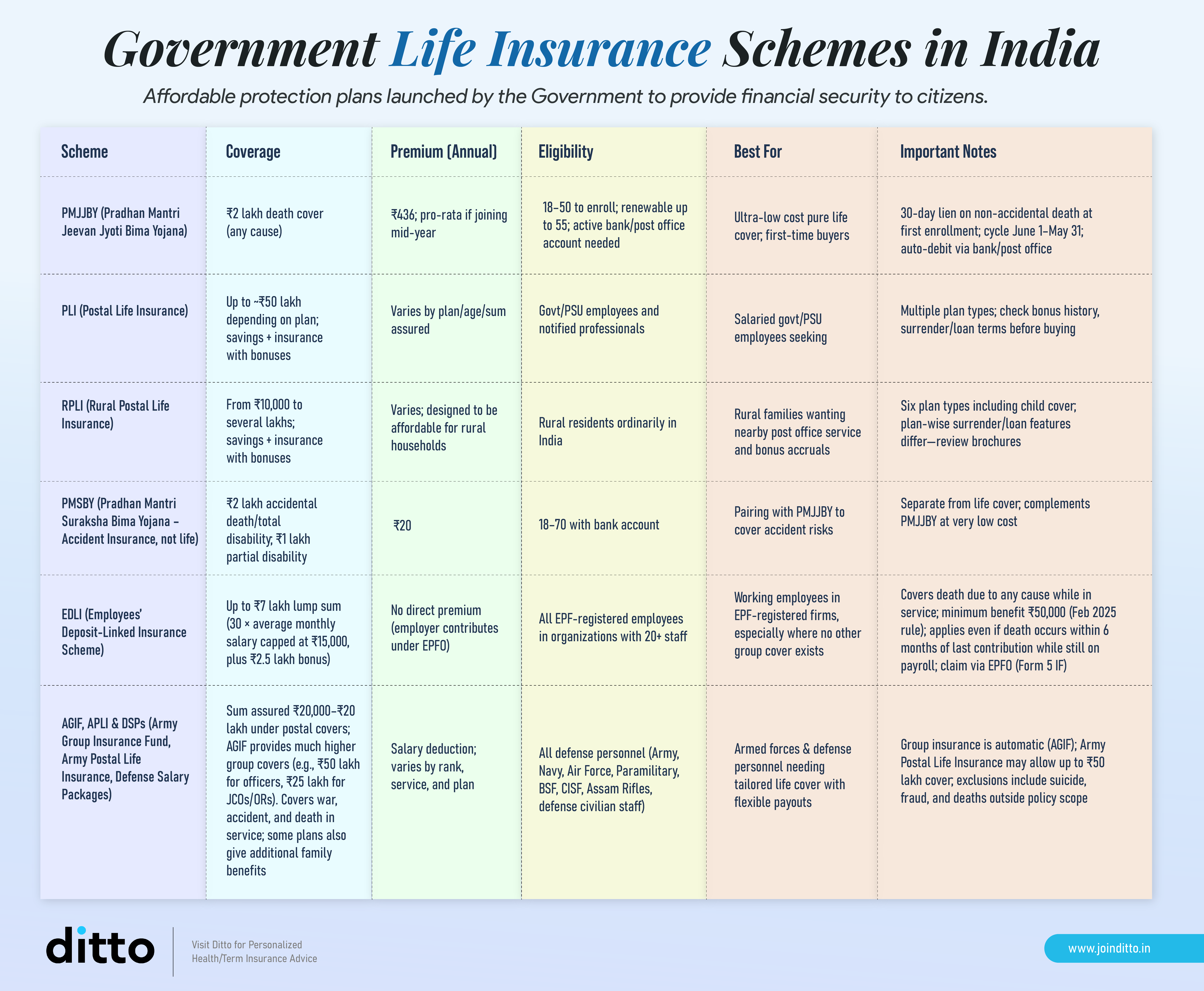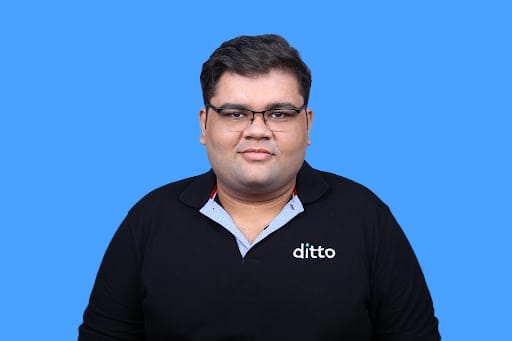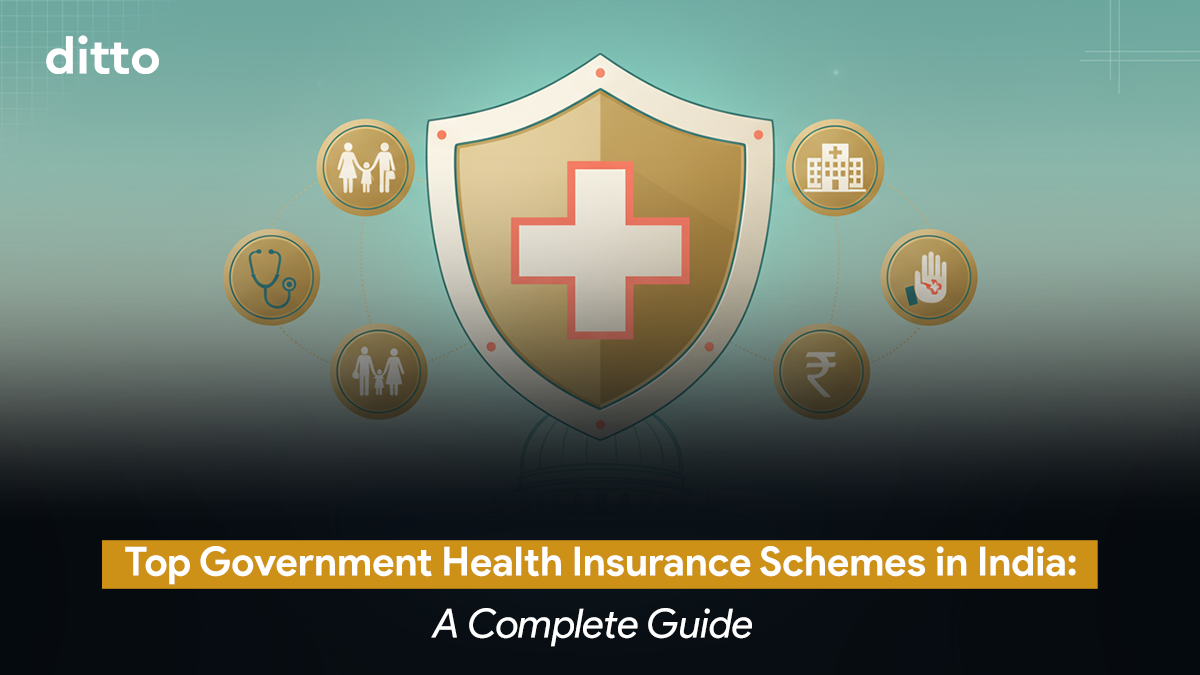| India’s top government health insurance schemes offer a critical safety net for millions who can’t afford private healthcare. From comprehensive programs like Ayushman Bharat PM-JAY, which provides ₹5 lakh per family for hospital care, to employee-focused schemes like CGHS and ESIS, these initiatives aim to reduce the financial burden of medical expenses. |
A short hospital stay can burn through your savings faster than you can say "ICU." That’s where government health insurance schemes come in; they’re not fancy, but they’re functional. And for millions of Indians, they’re the only real safety net.
These schemes are designed to make healthcare accessible and affordable, especially for those who need it the most. From senior citizens to daily wage workers, the government is trying to plug the gaps. Are they perfect? Not really. But they’re a crucial step toward healthcare for all.
What Are Government Health Insurance Schemes?
Government health insurance schemes are health policies that are funded or heavily subsidized by the government. Unlike private insurance, which is typically purchased individually, these plans are designed for specific groups, including low-income families, central/state government employees, senior citizens, and sometimes entire state populations.
They're not about deluxe hospital rooms or high-end treatments. Instead, they're designed to ensure that basic healthcare isn’t out of reach, especially when it’s needed most. Let’s break them down one by one.
Looking for broader coverage beyond government schemes? At Ditto, we help you compare, understand, and buy the right health insurance - minus the spam. Book a FREE call with our advisors today!
Government Health Insurance Schemes in India: Explained

1) Ayushman Bharat Pradhan Mantri Jan Arogya Yojana (PM JAY)
PM-JAY is the Indian government’s flagship health insurance scheme aimed at providing financial protection for secondary and tertiary care hospitalisation to over 50 crore economically vulnerable individuals.
Who is eligible?
PM-JAY covers the bottom 40% of the population based on SECC 2011 data. In 2019, eligibility was expanded to include vulnerable groups, such as senior citizens aged 70 and above without family support. Covered households include landless families, informal workers, and SC/ST communities. No enrolment fee or premium is required.
What’s covered?
You get up to ₹5 lakh per family per hospitalisation. Pre-existing diseases are covered from the first day. The scheme includes surgeries, ICU care, diagnostics, specialist consultations, and treatment for serious illnesses. There are currently 1,929 standardised treatment packages that cover a wide range of medical procedures from cancer care to cardiac surgeries and joint replacements.
What’s not covered?
Outpatient visits, general diagnostics, and medicines that aren’t tied to a hospitalisation episode are not included.
Additionally, the scheme covers expenses for up to 3 days of pre-hospitalization and 15 days of post-hospitalization, including diagnostics and medications.
How does it work?
Cashless and paperless treatment at public hospitals and empanelled private hospitals across the country.
2) Central Government Health Schemes (CGHS)
It is one of the oldest healthcare schemes in India, primarily serving central government employees and pensioners. It has been in operation since 1954 and currently functions in over 80 cities nationwide.
Who is eligible?
CGHS extends coverage beyond just employees and pensioners to include:
- Sitting and former Members of Parliament
- Sitting and former judges of the Supreme Court and High Courts
- Freedom fighters
- Journalists accredited with the Press Information Bureau in Delhi.
- Certain autonomous bodies and their employees (if enrolled)
Unlike PM-JAY, which is income-based, CGHS eligibility is based on occupation.
What’s covered?
CGHS offers a fairly comprehensive range of medical services
- Outpatient care at CGHS Wellness Centres.
- Inpatient care (hospitalisation) at empanelled private hospitals
- Specialist consultations and diagnostic tests
- Medicines (through CGHS dispensaries)
- AYUSH services (Ayurveda, Yoga, Unani, Siddha, and Homeopathy)
What are the caps and coverage?
- CGHS reimburses expenses based on predefined CGHS package rates, which are often significantly lower than those of private hospitals.
- Beneficiaries must bear the difference if a hospital charges more than the CGHS-approved rates, unless the case falls under the cashless category for pensioners.
- Non-CGHS city residents can still claim reimbursement if they follow the referral and documentation process correctly.
How does it work?
Serving employees typically pay upfront and then seek reimbursement at CGHS-approved rates. As for emergencies, any hospital can be approached, but reimbursement is still subject to CGHS ceilings.
What’s not covered?
CGHS exclusions are similar to those of private health insurance, excluding non-empanelled hospital treatments (except in emergencies), cosmetic procedures, and certain advanced therapies.
However, CGHS is more restrictive with outpatient medicines, limiting them to its own wellness centres, unlike private plans that often reimburse from a broader range of pharmacies. This reflects CGHS’s government focus on cost control.
3) Rashtriya Swasthya Bima Yojana (RSBY)
Launched for BPL families in the unorganized sector, it provided basic hospitalization coverage of up to ₹30,000/year per family. Beneficiaries got a smart card and could access services at empanelled hospitals. However, RSBY has been subsumed under PM-JAY since 2018, so it’s no longer active as a standalone scheme.
4) Employees’ State Insurance Scheme (ESIS)
The Employees' State Insurance Scheme (ESIS) is a self-financed social security and health insurance program administered by the Employees' State Insurance Corporation (ESIC).
It provides socio-economic protection to workers in the organized sector against events such as sickness, maternity, disability, and death due to employment-related injuries.
Who is eligible?
- Wage Limit: Employees earning up to ₹21,000 per month are eligible. For persons with disabilities, the monthly wage ceiling is ₹25,000.
- Employment Type: Applicable to non-seasonal factories and establishments with 10 or more employees (20 or more in some states).
- Contribution Exemptions: Employees earning a daily average wage of up to ₹176 are exempt from contributing; however, employers must still pay their share of the contribution.
What’s covered?
Medical Benefits under ESIS include inpatient care at 145 ESIC hospitals along with outpatient services through more than 1,400 dispensaries and 1,000 panel clinics. Coverage extends to the insured employee’s family, and even retired or permanently disabled beneficiaries can continue receiving medical care by paying a nominal annual premium of ₹120.
Cash benefits provide financial support during sickness (70% of wages for up to 91 days), maternity leave (full wages for 26 weeks, applicable for up to two children), and employment-related disabilities, offering 90% of salary during temporary disablement or as a lifelong pension in permanent cases.
In case of death due to workplace injury, dependents receive a monthly pension equivalent to 90% of the deceased’s wages, along with funeral expense reimbursement up to ₹15,000.
What’s not covered?
Benefits are capped based on wage levels, making it more akin to a basic social security program than a comprehensive health insurance plan. It also generally excludes outpatient treatments unrelated to employment injuries and services beyond standard hospital care.
How does it work?
Employees contribute 0.75% of their wages, while employers contribute 3.25%, making a total contribution of 4% of salary towards the ESIS. The employer needs to ensure that these are deposited.
5) Ex-Servicemen Contributory Health Scheme (ECHS)
Who is eligible?
ECHS is designed for ex-servicemen and their dependents across India. Members pay a one-time contribution based on their rank at retirement, ranging from ₹30,000 for junior ranks to ₹1,20,000 for officers.
What’s covered?
The scheme covers both outpatient and inpatient care, including doctor consultations, surgeries, medicines, diagnostics, and follow-up treatments. Outpatient services at ECHS polyclinics are generally fully covered, while inpatient care may be offered on a cashless or reimbursement basis.
What’s not covered?
Complete cashless treatment at private hospitals isn’t always guaranteed, with some requiring upfront payments. High-cost specialized procedures like organ transplants and specific cancer treatments may have limited coverage.
Outpatient medicines may not always be provided outside ECHS clinics. Specialist referrals and reimbursements can face delays. Access to empanelled hospitals is limited in remote areas, often requiring travel. Additionally, some benefits may be restricted for elderly beneficiaries based on medical need.
Overall, these schemes have their strengths and weaknesses. But what do we have to say about it?
Ditto’s Verdict: Government-backed schemes like PM-JAY, CGHS, ESIS, and ECHS are designed to protect specific groups: low-income families, government employees, industrial workers, and ex-servicemen.
PM-JAY, while the world’s most extensive government-funded health assurance program, offers only ₹5 lakh per family, which often falls short for major treatments.
CGHS is comprehensive in scope but struggles with long wait times, and private hospital bills usually exceed the CGHS ceiling rates, leaving beneficiaries to pay the difference unless they obtain prior permission and opt for cashless treatment.
ESIS offers comprehensive social security benefits, yet its medical coverage typically extends only to standard hospital services. ECHS stands out as a stronger support system for veterans and their families, offering meaningful health benefits despite some gaps.
However, a significant drawback across all these schemes is that many hospitals refuse them due to delayed or denied government payments. Moreover, compared to private health insurance, these schemes have lower coverage caps, fewer network hospitals, and slower claim processes.
To summarize and facilitate comparison, the table below breaks down the key aspects of each government health insurance scheme.
Government Health Insurance Schemes in India: Comparison Table
| Name/ Feature | PM- JAY | CGHS | ESIS | ECHS |
|---|---|---|---|---|
| Eligibility | Based on the Socio-Economic and Caste Census (SECC) 2011 deprivation/occupational criteria, covering the bottom 40% & all senior citizens above age 70 | Central govt employees, pensioners + dependents | Formal-sector Employees earning ≤ ₹21,000/month | Ex-servicemen + dependents |
| Sum Insured | ₹5 lakh per family per year | No fixed limit (as per CGHS-approved rates) | Medical care: ESI provides comprehensive medical care to the insured person and their family from the day of employment, with no limit on medical expenses. | Similar to CGHS (hospitalisation + OPD) |
| Premium | ₹0 (fully govt-funded) | Employees pay monthly contributions (structure is grade-based and deducted from salary/pension). | 0.75% of monthly wages (employee) + 3.25% of monthly wages(employer) | Deducted from the defence pension |
| Coverage Type | Secondary + tertiary care hospitalisation | OPD, specialist care, medicines + hospitalisation in CGHS facilities | OPD, hospitalisation, maternity, disability | OPD, medicines, specialist + hospitalisation |
| States Covered | Pan-India (all states except a few, like WB, opted out) | Available in select cities only | Pan-India (via ESI hospitals + empanelled private hospitals) | Pan-India (across 400+ ECHS polyclinics & empanelled hospitals) |
Now that we’ve covered the major central schemes, what about the ones your state might be offering?
State-specific Government Health Insurance Schemes in India
While central schemes like PM-JAY get most of the spotlight, many states in India run their own health insurance programs. Some of these are impressively efficient, even outperforming national ones in accessibility and execution. Here are some notable examples from across states.
1) Mahatma Jyotiba Phule Jan Arogya Yojana, Maharashtra
Covers over 900 procedures for low-income families. Offers cashless treatment at empanelled hospitals across the state. It’s like a mini PM-JAY, but state-funded.
2) Karunya Arogya Suraksha Padhathi (KASP), Kerala, and Bhamashah Swasthya Bima Yojana (BSBY), Rajasthan
Both these schemes have been integrated under the PM-JAY umbrella.
For KASP: Kerala’s public healthcare system remains one of the best in India. A strong network of government hospitals ensures that even without private insurance, you’re not left stranded.
For BSBY: covers families for ₹30,000 to ₹3 lakh, depending on the procedure. Despite the integration, it is still branded separately at the state level.
However, state schemes can vary significantly in their effectiveness. For instance:
- Tamil Nadu has one of the best-run state health insurance systems (CMCHIS), with a broad reach and consistent funding.
- Kerala leads with strong public infrastructure, resulting in less reliance on private hospitals. If you want, you can read our detailed article on Health Insurance in Kerala.
- In contrast, West Bengal opted out of PM-JAY and runs its own scheme (Swasthya Sathi). This is decent on paper, but implementation and transparency vary depending on governance.
Ditto’s Verdict: State-run schemes can be surprisingly effective, but only in certain parts of the country. While many schemes are merged under PM-JAY, state-level branding and delivery still vary widely. Your experience largely depends on where you live, rather than what’s promised on paper.
Ditto’s Take on Top Government Health Insurance Schemes in India
If you qualify for a government scheme, definitely make use of it. It can offer crucial support during emergencies. But if you have the financial means, private plans provide broader coverage, faster claims, and better hospital access.
Also worth noting is that India still faces a “missing middle” problem. Millions of people who are not poor enough for government schemes, but not privileged enough to have employer insurance or afford quality private plans. This group remains vulnerable and needs affordable, well-designed policies tailored to them.
Until government healthcare evolves into a truly universal system, these schemes will continue to act more as safety nets than full-scale health solutions. They are necessary, and in many cases, life-saving, but they aren’t yet sufficient.
Government vs Private Health Insurance Plans
Now, while government schemes are doing what they’re supposed to: reaching the masses and offering a safety net. There’s still a gap between access and actual care. That’s where private health insurance becomes relevant. It fills the blanks, adds layers, and gives you control over where you’re treated, how soon, and with what kind of coverage.
Private health plans are designed for individuals who prioritize speed and flexibility, not just survival. In contrast, government plans are built to be functional, not flexible. They're incredibly valuable, but often restricted by cost caps, empanelled hospital networks, and slower claim settlements.
So, if you're financially comfortable, private insurance isn’t just a luxury; it’s a must-have. If you'd like, you can review our list of recommended health insurance plans to get a better idea.
Conclusion
Government health insurance schemes, especially PM-JAY, are critical lifelines for millions, reducing financial shocks from health crises. With expanding coverage, stronger IT infrastructure, and growing awareness, these schemes are steadily shaping a more equitable healthcare future for India.
However, they’re not comprehensive enough (yet). So if you’re financially secure, you should definitely consider opting for a personal health insurance plan.
Still unsure? Book a free call with Ditto’s experts to find the perfect plan for you.
FAQs
Which is the best government health insurance in India?
PM-JAY offers the most comprehensive coverage, including ₹5 lakh per family, with no age or pre-existing condition caps, and nationwide portability.
Which health insurance is no. 1 in India?
There are numerous excellent health insurance plans available in India, tailored to your specific needs. As given in the table above, you can check our recommendations.
Who is eligible for Ayushman Bharat?
Families listed in SECC 2011's bottom 40%, plus any additional beneficiaries added by states. However, please note that with the new census announced, eligibility and overall data may be updated.
Last updated on:










